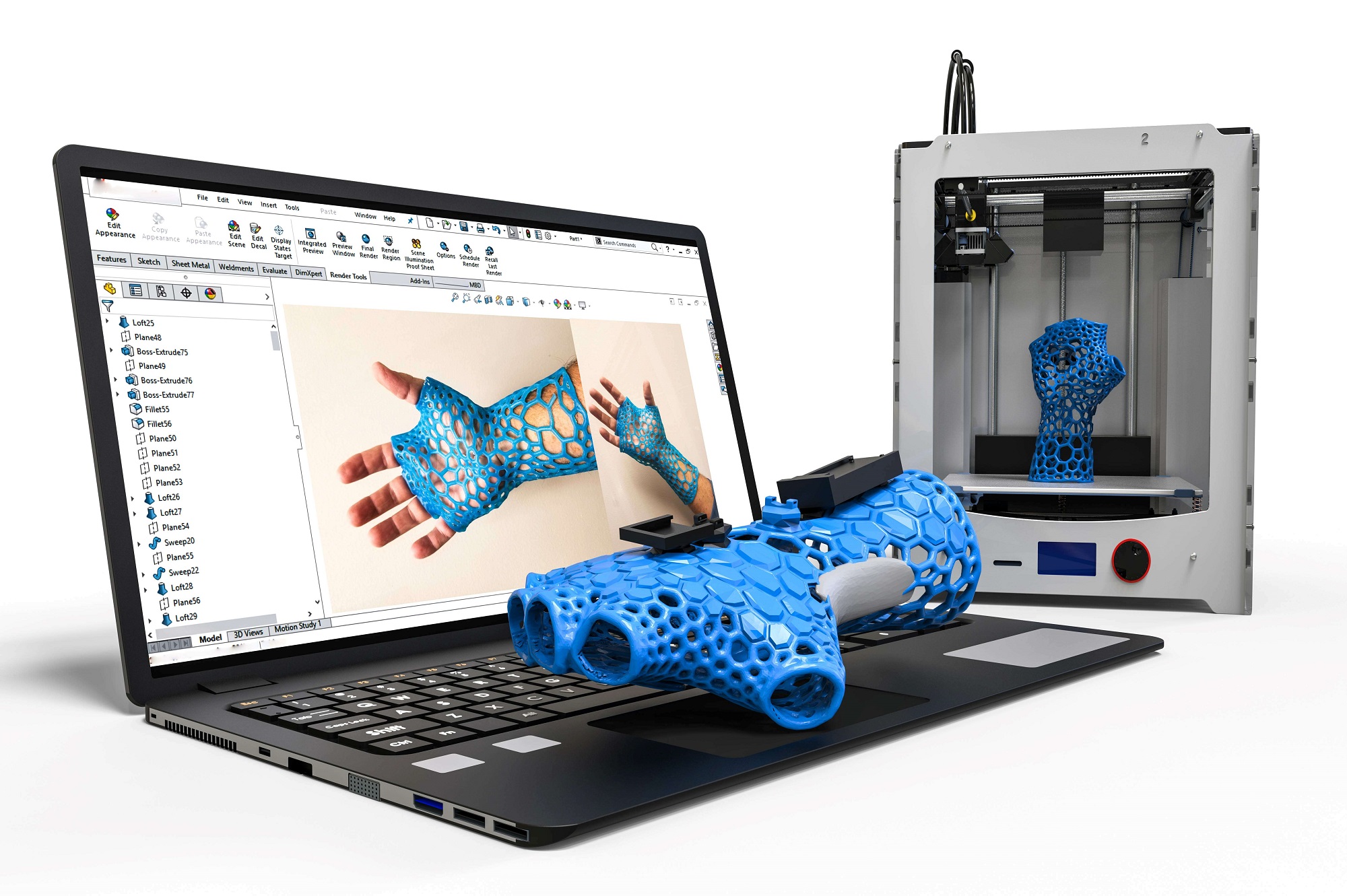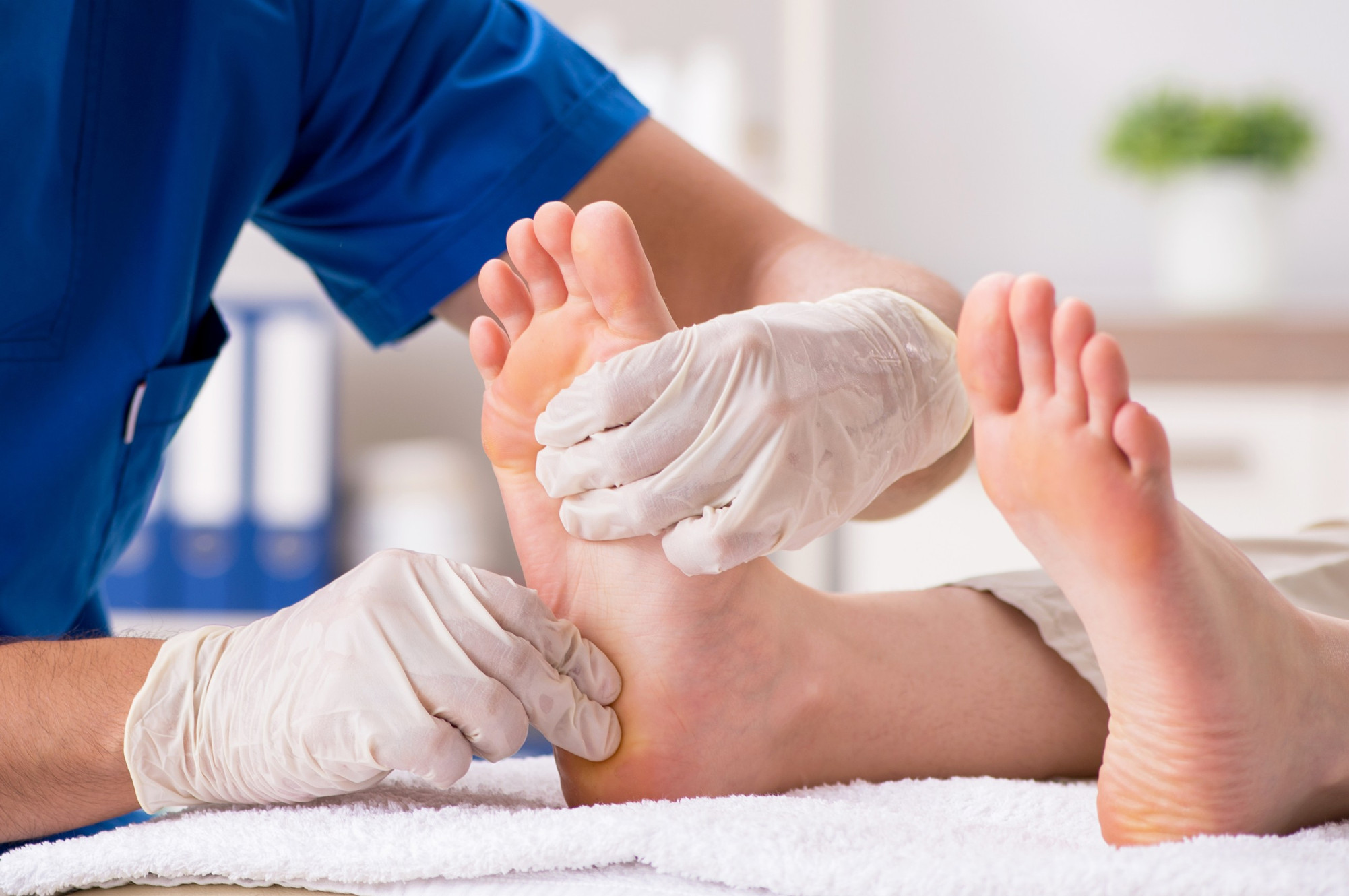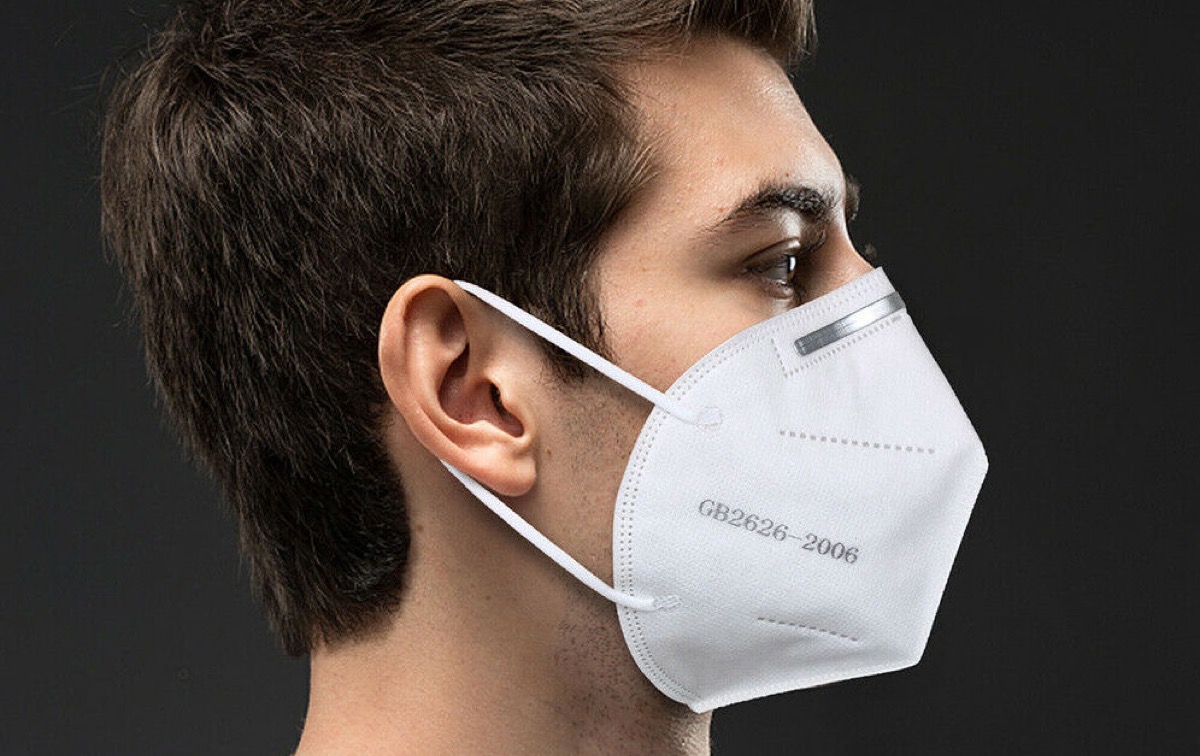Top 10 Ways Data Analytics is Changing Healthcare
Did you know that by 2025, the worldwide healthcare analytics industry is expected to be shockingly $50 billion. This figure is evidence of the ability of data analytics to transform healthcare. Imagine a time when hospital readmissions are significantly lowered, and therapies are tailored to your genetic composition, where your doctor can predict a health problem before you ever show symptoms. This world is not some distant science fiction—it’s happening right now, thanks to the power of data analytics.
Are you prepared to explore the innovative developments transforming healthcare? Let’s explore how Healthcare Data Analytics transform into an incredibly personalised, creative, and efficient tool. From predictive analytics to customised treatment regimens, these developments are poised to redefine patient care and medical practice altogether. A Data Analytics Course is the key to understanding and leveraging these groundbreaking changes.
Table Of Contents
- How is Data Analytics Changing Healthcare?
- Conclusion
How is Data Analytics Changing Healthcare?
Enhanced Use of Predictive Analytics
Imagine entering your doctor’s office, and instead of just addressing your current symptoms, your doctor uses your medical history, lifestyle, and genetic data to forecast potential health problems. This proactive approach enables personalised treatment plans to prevent issues before they arise. Predictive analytics uses enormous amounts of data to predict future health events, enabling early intervention and prevention. This proactive strategy can significantly lower the incidence of chronic diseases, including diabetes and heart disease.
Reducing Hospital Readmissions
Data analytics helps identify trends and risk factors connected to hospital readmissions. Examining patient data helps healthcare professionals create focused intervention plans to stop readmissions. This not only enhances patient outcomes but also lessens hospital resource strain and lowers healthcare expenses.
Optimising Hospital Operations
Imagine a hospital where resources are used effectively, long wait times are absent, and personnel levels match patient demands. Data analytics manages inventories, forecasts patient admissions, and optimises staffing plans, thus improving hospital operations. Faster operations and improved patient care follow.
Advancing Research and Development
Have you ever found it fascinating how new therapies and medications are created? Data analytics analyses enormous databases to find new medicines and assess their efficacy, accelerating research and development. This can significantly improve the introduction of fresh medications and therapies onto the market, possibly saving many lives.
Improving Population Health Management
Imagine being able to forecast and control communal health trends. Using population health data analysis, trend identification, and focused public health intervention development, data analytics lets healthcare providers address problems on a community-wide level; this can result in better health outcomes, including epidemic control and more efficient care of chronic diseases.
Enhancing Diagnostic Accuracy
Consider the most recent diagnosis you or someone you know underwent. Was there concern over the validity of the findings? Data analytics improves diagnosis accuracy through pattern and anomaly analysis of medical data. Early and more accurate diagnosis is vital for efficient therapy.
Personalised Treatment Plans
Ever wonder why a treatment that works for one individual might not apply to another? Data analytics enables the development of customised treatment regimens by analysing individual genetic information, medical history, and lifestyle decisions. Treatments can thus be customised especially for you, enhancing their effectiveness and lowering their adverse effects.
Cost Reduction and Efficiency
Have you ever found a medical bill shocking? Data analytics finds areas for cost savings and inefficiencies, helping to lower healthcare expenses. Healthcare providers can simplify procedures, reduce waste, and more wisely distribute resources using financial and operational data analysis. This raises the general quality of treatment in addition to saving money.
Supporting Telemedicine and Remote Monitoring
Imagine getting medical attention right from your house. Data analytics from wearable devices, mobile health apps, and telehealth consultations help telemedicine and remote patient monitoring. This gives patients quick and easy treatment, enabling constant monitoring and management of health disorders.
Enhanced Patient Care and Experience
Imagine never having to review your medical history each time you see a different doctor. Data analytics integrates and analyses patient data from many sources, giving healthcare providers a complete picture of a patient’s health. The outcomes are better-coordinated treatment, enhanced patient outcomes, and a more seamless patient experience.
Conclusion
Accepting the power of data analytics will help us see a time when healthcare is more customised, efficient, and effective than ever. This is an exciting period to be engaged in healthcare regardless of your level of patience, medical practitioner, or interest in the most recent developments. Consider joining The Knowledge Academy and learn data analytics possibilities to design a better future for all.
Why Pilates in Thornlands is the Ultimate Fitness Destination
When searching for the perfect place to achieve physical wellness, what makes a studio stand out? How does a specific location become synonymous with excellence? These questions often lead to the discovery of hidden gems.
Nestled in a serene environment, centres for Pilates in Thornlands offer a unique blend of techniques and holistic approaches that cater for both beginners and advanced practitioners. Its reputation as a premier destination is due not just to its state-of-the-art facilities but also to the personalised attention each participant receives.
Holistic Approach to Physical Wellness
At the core of this establishment is a commitment to comprehensive well-being. The trainers emphasise a balance between mental and physical health, ensuring that each session contributes to overall harmony. This balanced approach attracts individuals seeking not just a workout but a lifestyle change. It promotes lasting benefits that extend beyond the studio walls.
Expert Trainers and Customised Sessions
One of the standout features is the team of expert trainers who bring years of experience to the table. They tailor sessions to meet individual needs, ensuring that everyone, regardless of their level, can benefit. Whether healing from an injury or aiming to enhance athletic performance, personalised plans make all the difference. Their dedication ensures that participants achieve their personal goals effectively.
State-of-the-Art Facilities
The facilities here are second to none. From modern equipment to spacious, well-ventilated studios, every detail is designed to create a conducive environment for practice. This attention to detail ensures that participants focus on their routines without distractions. The ambience itself motivates one to push beyond one’s limits.
Community and Support System
A strong sense of community distinguishes this studio from others. Participants are not just members; they are part of a supportive network that encourages progress and celebrates milestones. This camaraderie enhances motivation and makes the journey towards wellness more enjoyable. Sharing experiences and successes fosters a deeper commitment to the program.
Variety of Classes and Programs
The diverse range of classes and programs offered ensures that there is something for everyone. Here are some of the popular options:
- Beginner Classes: Perfect for those new to this form of exercise, these classes introduce the basics and build a solid foundation.
- Advanced Sessions: For those looking to challenge themselves, advanced sessions offer more intense routines that push physical limits.
- Rehabilitation Programs: For those recovering from injuries, these programs focus on gentle yet effective techniques to aid recovery.
- Specialised Workshops: These workshops cover specific aspects, such as posture improvement or core strengthening, providing focused learning opportunities.
Each program is designed with careful consideration to suit the precise needs and goals of the participants.
Focus on Flexibility and Core Strength
A key aspect of the programs here is the emphasis on flexibility and core strength. These elements are crucial for overall physical health, and the routines are designed to enhance them. Participants often report significant improvements in their flexibility and core stability after regular sessions. This foundational strength also supports better performance in other physical activities.
Relaxation and Recovery Areas
The studio offers designated spaces for relaxation and recovery, where participants can unwind after a session. These areas are equipped with amenities that help in muscle relaxation and stress relief, enhancing the overall experience and promoting faster recovery. Such facilities ensure that every aspect of the participant’s well-being is taken care of.
Centres for Pilates in Thornlands stands out as the ultimate destination for those desiring a comprehensive approach to physical wellness. This studio is not just a place to exercise; it is a sanctuary for those dedicated to improving their well-being in a supportive and sustainable environment. For anyone serious about their journey towards better health, this destination offers an unmatched experience.
Top Benefits of Incorporating Pilates Equipment into Your Fitness Routine
Are you looking to enhance your fitness routine? Have you considered adding Pilates apparatus to your workouts? Pilates offers many benefits that can transform your fitness journey. Let’s explore the top benefits of incorporating Pilates apparatus into your routine.
Enhance Your Core Strength
Pilates equipment is renowned for its focus on the core. Equipment like Reformers and stability balls can more effectively target these muscles. A strong core improves balance, posture, and strength and supports other exercises and daily activities.
Equipment That Boosts Core Workouts
-
Reformers:
These machines add resistance, intensifying core exercises. They provide adjustable tension, allowing for personalised workouts. Regular use of Reformers can significantly enhance core stability.
-
Stability Balls:
These balls require constant core muscle engagement for balance. They are versatile and suitable for a range of exercises beyond core work. Stability balls also improve coordination and overall body strength.
-
Pilates Rings:
Adding rings to your routine can increase the challenge and effectiveness of core exercises. They are portable and easy to incorporate into home workouts. Pilates rings also help in targeting specific muscle groups for better toning.
Improve Flexibility and Mobility
Pilates apparatus can help. Stretching with equipment like the Cadillac or spine corrector deepens stretches. This enhances flexibility and improves overall mobility. It also reduces the risk of injury. Using this equipment for stretching has several advantages. It allows for more profound and controlled stretches. It improves muscle elasticity and relieves muscle tension.
Boost Your Balance and Coordination
Balance and coordination are crucial for overall fitness. This equipment challenges your stability and enhances these skills. For instance, exercises on the Pilates Reformer require controlled movements, improving balance and coordination over time.
Increase Muscle Tone and Strength
Looking to tone your muscles? Pilates apparatus provides resistance training that targets specific muscle groups. This enhances muscle tone and strength without creating bulk. It’s an excellent method to achieve a lean, sculpted appearance.
Targeted Muscle Training
Equipment like resistance bands and Reformer springs can target different muscle groups. This customisation leads to balanced muscle development, helping to achieve strength and endurance. By targeting specific areas, you can correct muscle imbalances, ensuring a more thorough and effective workout.
Enhance Your Workout Versatility
Pilates apparatus adds variety to your workouts. Equipment like the Reformer or Cadillac offers numerous exercise possibilities. This variety keeps workouts exciting and challenges different muscle groups. It prevents workout monotony and keeps you engaged. The diverse exercises help in achieving balanced muscle development.
Reduce Stress and Improve Mental Health
Pilates is not just about physical fitness. It also promotes mental well-being. Pilates’ mindful movements and controlled breathing reduce stress and enhance mental clarity. Using equipment can further deepen this connection, making your workout a meditative experience.
Mental Health Benefits
Stress Reduction:
Controlled movements help in lowering stress levels. This fosters relaxation and a sense of calm. It can also enhance sleep quality and alleviate anxiety.
Enhanced Focus:
Concentration on exercises improves mental clarity. This boosts productivity and cognitive function. It helps in maintaining focus throughout the day.
Mind-Body Connection:
Deepens the connection between mind and body. This awareness improves overall well-being and mental health. It also fosters a greater sense of self-awareness and presence.
Support Rehabilitation and Injury Prevention
Pilates equipment is excellent for rehabilitation. It provides low-impact exercises that support healing and strengthen muscles around joints, preventing future injuries. The controlled movements reduce the strain on injured areas, promoting faster recovery and helping to regain strength. The equipment can be adjusted to suit different recovery stages and individual needs.
Incorporating Pilates equipment into your fitness routine offers many benefits. It enhances core strength, improves flexibility, boosts balance, and increases muscle tone. It also adds versatility to workouts, reduces stress, and supports rehabilitation. Embrace Pilates apparatus and unlock your potential in fitness.
From Pain to Performance: How Podiatrist Clinics Transform Lives
Have you ever found yourself held back by persistent foot pain or discomfort? Perhaps every step feels like a struggle, or you’ve had to give up activities you love due to nagging foot issues. This is where foot clinics step in, offering more than just treatment—they offer transformation. Let’s explore how these specialised clinics can turn pain into performance and enhance your quality of life.
Relieving Chronic Pain
Imagine waking up without the throbbing pain in your heels or the stabbing sensation with each step. A podiatrist clinic diagnoses and treats chronic foot conditions that cause discomfort and limit mobility. Whether it’s plantar fasciitis, bunions, or Achilles tendonitis, podiatrists have the expertise to provide targeted relief through personalised treatment plans.
Restoring Mobility and Function
Even the simplest tasks can become daunting when your feet are in pain. Foot clinics aim to alleviate pain and restore your ability to move freely.
Orthotics:
Orthotics are custom-made inserts that correct podiatric alignment and support natural movement. They alleviate pain by redistributing pressure and enhancing comfort during daily activities. Each pair is crafted to fit the individual’s unique foot structure, ensuring optimal support and functionality.
Physical Therapy:
Physical therapy at podiatric clinics targets specific muscle groups and joints affected by podiatric conditions. Sessions focus on improving strength and range of motion while educating patients on proper biomechanics. This approach helps maintain long-term health and prevents future injuries effectively.
Enhancing Quality of Life
Podiatric problems extend beyond physical discomfort, significantly impacting overall well-being and daily activities. These issues can hinder mobility and limit participation in favourite sports or routine tasks.
Restoring Mobility and Comfort
Podiatrists focus on alleviating pain and discomfort through personalised treatment plans. Successful treatment of chronic conditions such as plantar fasciitis or acute injuries restores patients’ mobility and comfort, enabling them to move with ease. This restoration often includes using orthotics to correct alignment and enhance natural movement.
Facilitating Active Lifestyles
For many, podiatric pain can be a barrier to participating in sports or physical activities they enjoy. Podiatrist clinics provide solutions that enable patients to engage in these activities pain-free. Through targeted therapies and rehabilitation, individuals regain the confidence to resume active lifestyles without limitations.
Empowering Through Education and Prevention
Foot clinics also empower patients through education on proper foot care and injury prevention strategies. By understanding how to care for their feet and recognising early signs of trouble, individuals can proactively manage their foot health and prevent future problems.
Promoting Long-Term Health and Wellness
Podiatrist clinics emphasise long-term health by addressing underlying issues that contribute to foot pain and discomfort. Treating flat feet or abnormal gait early prevents complications from worsening over time, promoting better mobility and reducing the risk of future injuries. This proactive approach enhances immediate comfort and promotes overall wellness and longevity.
Restoring Independence and Confidence
Foot pain can significantly impact independence, making everyday tasks challenging and restricting mobility. Foot clinics are crucial in restoring independence by improving foot function and alleviating pain. Podiatrists empower their patients to regain confidence in their ability to move freely and live independently. They assist elderly patients in maintaining their mobility and support individuals with disabilities to achieve greater independence.
A podiatrist clinic is more than just medical practice—they are transformative hubs that restore comfort, mobility, and joy to countless lives. Whether you’re a sports enthusiast sidelined by injuries or someone dealing with chronic foot pain, seeking professional care from a podiatrist can begin a new chapter in your journey to optimal foot health. Begin your journey towards a pain-free, active life today—your feet will appreciate it!
How Complementary Compounding Services Are Revolutionising Healthcare?
In the ever-evolving world of healthcare, one element that has drastically converted affected person care is the upward thrust of complementary compounding offerings. These services offer a bespoke approach to medicinal and remedy, tailor-made mainly to character patient desires. By moving beyond the one-size-suits-all version, compounding offerings have ushered in a new era of personalised healthcare. This article delves into how complementary compounding services offerings are revolutionising healthcare, exploring their benefits, applications, and the destiny capability they hold.
Understanding Complementary Compounding Services
Compounding offerings involve the practice of custom designed medications with the aid of certified pharmacists. This technique lets in for the creation of remedies that aren’t commercially available, addressing particular patient requirements that preferred medications can’t meet. These offerings play a critical role in various clinical fields, imparting solutions for sufferers with particular health demanding situations.
Personalisation in Treatment
One of the most widespread blessings of compounding offerings is the level of personalisation they provide. Standard remedies often come in constant dosages and paperwork, which won’t be appropriate for all sufferers. Compounding services allow pharmacists to tailor remedies based on man or woman factors consisting of age, weight, allergic reactions, and unique fitness situations. This personalised approach complements the efficacy of treatments, main to higher patient consequences.
Addressing Allergies and Intolerances
Many patients are afflicted by allergic reactions or intolerances to sure elements typically located in standard remedies. Compounding services offer a useful answer via developing formulations that miss these complicated substances. This guarantees that patients can acquire the remedies they need without negative reactions, significantly enhancing their niceness in life.
Innovative Delivery Methods
Compounding services are not limited to the introduction of treatments in traditional bureaucracy including pills or beverages. They also offer revolutionary shipping techniques tailor-made to patient options and desires. These encompass topical applications, transdermal patches, and flavoured lozenges. Such variety in delivery techniques can beautify patient compliance, mainly among kids and the elderly who may additionally battle with trendy remedy forms.
Palliative Care and Chronic Conditions
For sufferers in palliative care or those handling chronic situations, compounding services provide a lifeline. They can provide treatments in particular dosages and bureaucracy which might be greater conceivable for those sufferers. Additionally, they can combine a couple of medicinal products into an unmarried dose, simplifying treatment regimens and lowering the weight on patients and caregivers.
Hormone Replacement Therapy (HRT)
Hormone replacement therapy is every other place where compounding services have made a big impact. By tailoring hormone treatments to man or woman affected persons wishes, compounding pharmacists can help manipulate situations inclusive of menopause, thyroid problems, and adrenal insufficiency. Personalised hormone treatments can result in better symptom control and progressive universal health.
Paediatric and Geriatric Care
Children and the elderly regularly require unique issues on the subject of treatment. Compounding offerings can alter dosages and paperwork to make treatments safer and greater powerful for these inclined populations. For example, they are able to create paediatric-pleasant flavours or adjust the electricity of a remedy for an elderly affected person with reduced organ characteristics.
Veterinary Medicine
Compounding offerings are not limited to human healthcare. They additionally play an essential function in veterinary medicine. Pets often have precise clinical wishes that general treatments cannot deal with. Compounding pharmacists can create tailor-made remedies for animals, considering elements such as species, sise, and unique health troubles. This ensures that pets receive quality viable care.
Enhancing Compliance
Patient compliance with treatment regimens is a critical thing in accomplishing nice fitness consequences. Compounding offerings can enhance compliance by using imparting treatments in forms which can be less difficult for patients to take. This would possibly encompass altering the flavour, texture, or shipping approach of a treatment, making it extra palatable and convenient for the affected person.
Dermatology and Skincare
In dermatology, compounding services offer customised solutions for various skin conditions. Pharmacists can create treatments tailored to the precise desires of patients, addressing problems which include sits, psoriasis, eczema, and other pores and skin disorders. This customised method can lead to more powerful remedies and improved skin fitness.
Pain Management
Pain control is some other area wherein compounding services have demonstrated invaluable. Chronic pain sufferers often require particular remedies that are not available in general forms. Compounding pharmacists can create custom designed ache alleviation treatments that cope with the specific wishes of every affected person, leading to higher pain management and stepping forward best of life.
Meeting Unique Medical Needs
Some patients have specific scientific needs that well known remedies cannot meet. Compounding services can fill this gap by creating treatments tailor-made to these particular necessities. This consists of remedies for rare situations, custom formulations for sensitive patients, and solutions for folks that need opportunity delivery methods.
Supporting Innovation in Healthcare
Compounding offerings help innovation in healthcare by way of imparting customised answers that fashionable remedies can’t provide. This flexibility allows for the improvement of new remedy strategies and the model of existing treatments to meet patient desires. As a result, compounding services make contributions to the development of personalised medicinal products.
Enhancing Patient-Provider Relationships

The personalised nature of compounding services fosters more potent relationships between patients and healthcare companies. By operating intently with compounding pharmacists, healthcare vendors can broaden tailor-made treatment plans that cope with the specific needs of every patient. This collaborative technique complements trust and communique, mainly to better affect personal care.
Improving Health Outcomes
Ultimately, the goal of compounding offerings is to improve health outcomes for sufferers. By supplying personalised treatments that cope with man or woman wishes, compounding services can result in more powerful remedies, decreased facet consequences, and better standard fitness. This recognition on personalised care represents a big shift in healthcare, shifting faraway from a one-size-suits-all model to a greater affected person-centred approach.
Regulatory Considerations
As with any issue of healthcare, compounding services are issued to regulatory oversight to ensure protection and efficacy. Regulatory bodies set standards for compounding practices, making sure that remedies are organised in a managed and secure surroundings. These regulations help preserve the integrity of compounding services and shield affected person health.
The Future of Compounding Services
The destiny of compounding offerings seems promising, with persevered improvements in generation and personalised medication. As healthcare actions towards an extra affected person-focused method, the demand for customised remedies is possibly to boom. Compounding offerings will play a vital function in meeting this demand, supplying innovative solutions that cope with the specific desires of each affected person.
Integrating Technology
Technology is about to play an enormous function within the destiny of compounding offerings. Advances in precision remedy, genetic checking out, and digital health gear will permit even extra personalised remedy methods. For example, genetic checking can help pick out how individual patients respond to unique treatments, taking into consideration the advent of especially tailor-made answers. Digital health gear also can facilitate higher verbal exchange and coordination between patients, healthcare carriers, and compounding pharmacists.
Expanding Access to Compounding Services
Increasing admission to compounding offerings is every other critical aim for destiny. This consists of increasing the supply of these offerings in rural and underserved regions, in addition to growing awareness amongst healthcare providers and sufferers. By making compounding services greater handy, a bigger wide variety of sufferers can gain from personalised remedy alternatives.
Conclusion
Complementary compounding offerings are revolutionising healthcare by providing personalised, progressive solutions that address the specific needs of each patient. From improving treatment outcomes and patient compliance to supporting innovation and enhancing patient-provider relationships, compounding services play an essential role in the future of healthcare. As technology advances and the demand for customised medication grows, compound medication pharmacy will continue to evolve, offering even more tailored and effective treatments for patients worldwide. The ongoing development and integration of these services into mainstream healthcare promise a brighter, more patient-centred future for all.
Staying Safe on the Roads: Essential Tips for Avoiding Car Accidents
Understanding Common Causes
Car crashes can occur to individuals, no matter their level of driving expertise. Common causes include distraction, speeding, and driving under the influence. Distracted driving alone accounted for 9% of fatal crashes in 2019. Whether you’re a seasoned driver or new behind the wheel, these risks remain pertinent. Being conscious of these risk factors and proactively working to minimize them is essential. If you hire a car accident lawyer from FrancisTxLaw.com, they can easily handle the legal challenges after you’ve been involved in an accident.
Practical Safety Tips
Several strategies can help you avoid accidents. First and foremost, always stay focused. Avoid using your phone and other distractions, like eating or adjusting the radio. Stick to speed limits and maintain a safe following distance. Additionally, be extra cautious during adverse weather conditions. For more tips on staying safe, this driving in lousy weather guide is helpful. These measures can collectively enhance your driving safety and reduce accident risks.
Staying Focused
Distractions are everywhere, from mobile phones to roadside billboards. The best way to stay focused is to limit these distractions. Hands-free devices and voice-activated controls can help, but remember that mental distraction can be just as dangerous as physical distraction.
Make a conscious effort to stay alert, avoid multitasking, and keep your eyes on the road. Regularly practicing defensive driving can also help sharpen your focus. By making focus a habit, you significantly lower your risk of accidents.
Adhering to Speed Limits
Driving too fast leads to quicker response time reduction and more severe accidents. Always stick to posted speed limits and adjust your speed based on road conditions. High speeds make it more challenging to control your vehicle and stop suddenly if necessary.
It’s not just about avoiding fines; adhering to speed limits can prevent potentially life-threatening situations. Moreover, high-speed collisions often result in more severe injuries and damage, underscoring the importance of maintaining safe speeds.
Maintaining Safe Distances
Keeping a sufficient distance behind the car ahead of you enables you to react if it suddenly comes to a stop. The “three-second rule” is a good guideline: when the vehicle ahead passes a stationary object, it should take at least three seconds for your car to reach the same point.
This buffer zone allows you to react to sudden changes on the road without risking a rear-end collision. In adverse weather conditions, this distance can be increased further. A safe following distance effectively ensures ample time to make critical driving decisions.
The Importance of Vehicle Maintenance
Regular maintenance is crucial for vehicle safety. Be sure to inspect your brakes, tires, and lights regularly. Properly inflated tires and functional brakes are essential for safe driving. A surprising number of accidents are due to mechanical failures that could be prevented with regular check-ups. Knowing your vehicle inside out and addressing issues head-on can be incredibly beneficial.
Regular Check-Ups
Conduct routine inspections and follow your vehicle’s maintenance schedule. Please pay attention to warning lights on your dashboard; they often signal that something needs immediate attention. A maintenance log can also help you stay on track and remind you of the necessary check-ups. Proactive maintenance not only extends the life of your vehicle but also ensures you are less likely to encounter mechanical failures while driving.
Tire Safety
Tire condition is frequently ignored, yet it is crucial for safe driving. Ensure you maintain the correct tire pressure and inspect the tread often. Bald tires can lead to skidding, especially in wet conditions, making it harder to control your vehicle. Measure the tread depth and look out for signs of uneven wear.
Ensuring proper alignment and rotating tires can prolong tire lifespan and enhance vehicle handling. These steps ensure that your tires will perform reliably under various driving conditions.
What to Do in Case of an Accident
If you find yourself in an accident, stay calm. Inspect for any injuries and contact emergency services if necessary. Exchange information with the other driver and take photos of the scene for documentation. It’s also wise to know your legal rights and consider consulting a professional if necessary. These initial steps can significantly affect how the situation is resolved.
Immediate Steps
Once you ensure everyone is safe, call the authorities to report the accident. Getting an official report for insurance claims and legal documentation is essential. If you can, relocate your vehicle to a secure spot to prevent additional dangers.
Be sure to activate your hazard lights to warn other drivers. Staying calm and composed can help you think clearly and act responsibly. Always keep an emergency kit in your vehicle that includes first-aid supplies, a flashlight, and essential tools.
Documenting the Accident
Document the damage to all vehicles involved, note the weather conditions, and gather witness statements if available. This information can be invaluable for your insurance claim and any potential legal proceedings.
Please keep a copy of your notes and photos and file them with police reports and medical records. Timely and thorough documentation can significantly aid in efficiently resolving disputes and claims.
Final Thoughts
Staying safe on the roads requires vigilance, attention to detail, and consistent vehicle maintenance. Understanding common causes of accidents and adhering to practical safety tips can significantly decrease your risk. Remember always to be prepared and know what to do in case of an accident. Safe driving is a collective responsibility; every action to enhance your safety contributes to a safer driving environment for all road users.
Advancements In Medical Care For Trauma-Related Injuries
Trauma knows no boundaries. It strikes unexpectedly, shattering lives in an instant. Whether it’s a sudden accident, a senseless act of violence, or a natural disaster, the physical and emotional toll is immense. In the blink of an eye, a life can be forever altered, leaving families to pick up the pieces.

But amidst the darkness, a glimmer of hope emerges. The world of medicine is undergoing a revolution, with groundbreaking advancements transforming the landscape of trauma care. These innovations save lives and restore hope to those who need it most. This article will explore the innovations that are reshaping the way healthcare approaches these life-altering injuries. Read on.
Understanding Trauma-Related Injuries
Trauma encompasses a wide array of injuries that can vary in severity and impact. Here are some of the most common types of trauma-related injuries:
Head injuries
From mild concussions to severe traumatic brain injuries, head trauma can have lasting effects on cognitive function, memory, and emotional well-being. In the most severe cases, the expertise of a neurosurgeon may be required to address brain bleeds, skull fractures, or other complications.
Spinal cord injuries
Damage to the spinal cord can disrupt communication between the brain and the body, leading to partial or complete paralysis. These injuries often require extensive rehabilitation and ongoing care.
Internal organ injuries
Blunt force trauma to the abdomen or chest can cause damage to vital organs like the spleen, liver, or lungs. Internal bleeding, organ rupture, and difficulty breathing are all potential consequences.
Broken bones and fractures
These are common in falls, accidents, and sports-related injuries. While some fractures heal relatively quickly, others can be complex and require surgery to repair.
Soft tissue injuries
These include sprains, strains, and contusions (bruises). While they may seem less severe than other injuries, they can still cause significant pain and limit mobility.
Burns
Heat, chemicals, electricity, or radiation can cause burns. They vary in severity and can lead to scarring, infection, and even organ failure.
Psychological trauma
While not always visible, the emotional and psychological impact of trauma can be just as devastating as physical injuries. Post-traumatic stress disorder (PTSD), anxiety, and depression are common among trauma survivors.
This list is not exhaustive, but it provides a snapshot of the diverse ways trauma can affect the human body. Each injury presents unique challenges and requires specialized care.
Now, let’s explore the groundbreaking developments that are revolutionizing the field of trauma care:
Innovations in Diagnostic Tools
The days of relying solely on physical examinations and basic X-rays to assess trauma are fading fast. A new era of diagnostic tools has dawned, empowering medical professionals to see inside the body with unprecedented clarity and speed.
Portable ultrasound
Once confined to hospital rooms, ultrasound technology is now available in a handheld format. Paramedics and emergency room doctors can quickly scan for internal bleeding, organ damage, or other life-threatening conditions right at the patient’s side. This rapid assessment can guide immediate treatment decisions, potentially saving precious minutes.
Point-of-care testing
These portable devices can assess markers of organ damage, coagulation disorders, and other critical parameters, giving doctors real-time information to guide their interventions.
Artificial Intelligence (AI) in imaging
AI algorithms are revolutionizing the way medical images are interpreted. They can sift through vast amounts of data to identify subtle patterns that might be missed by the human eye, helping to pinpoint hidden injuries and prioritize treatment.
CT scans and 3D imaging
While not new, CT scans have become faster and more precise, allowing doctors to create detailed 3D models of the body. This enables them to visualize complex fractures, internal bleeding, and organ damage with remarkable accuracy, leading to more informed surgical decisions.
These are just a few examples of the innovative diagnostic tools transforming trauma care. The ability to quickly and accurately assess injuries saves lives and improves patients’ long-term outcomes.
Surgical Advancements
Surgical advancements continually push the boundaries of what’s possible, offering new hope for patients who once faced grim prognoses.
Minimally invasive surgery
Minimally invasive techniques, often involving tiny cameras and specialized instruments, are becoming the standard for many trauma procedures. This means less blood loss, reduced risk of infection, and faster healing for patients.
Robotic-assisted surgery
Robotic surgery offers surgeons enhanced dexterity, visualization, and control. While still in its early stages for trauma applications, this technology holds the potential to revolutionize complex procedures like spinal reconstructions and delicate organ repairs.
Endovascular techniques
This minimally invasive approach allows surgeons to access blood vessels from within, using catheters and tiny instruments. It can stop internal bleeding, repair damaged arteries, or even remove blood clots in the brain, all with minimal disruption to surrounding tissues.
Damage control resuscitation
This innovative approach prioritizes stopping bleeding and stabilizing the patient before attempting definitive repairs. By controlling hemorrhage early on, surgeons can buy time for the body to recover and increase the chances of a successful outcome.
These are just a few surgical advancements transforming trauma care, and the future is brimming with possibilities. The ultimate goal remains clear: to empower trauma patients to reclaim their lives and flourish.
Regenerative Medicine and Tissue Engineering
The human body is a remarkable machine capable of incredible feats of healing. But sometimes, the damage is too great for natural repair mechanisms. That’s where regenerative medicine and tissue engineering step in, offering a glimpse into a future where we can rebuild and restore what was once thought to be lost.
Stem cell therapies
Stem cells are the body’s raw materials, capable of transforming into various types of cells. Researchers are exploring their potential to regenerate damaged tissues in organs like the heart, liver, and spinal cord. Imagine injecting stem cells into a damaged heart to repair muscle tissue or using them to restore function to a paralyzed limb.
Tissue engineering
Scientists are developing scaffolds that mimic the body’s natural structures, then seeding them with cells to grow new tissues. This could revolutionize the treatment of burns, traumatic amputations, and even organ failure.
3D bioprinting
Imagine a printer that can create custom-made organs and tissues on demand using a patient’s own cells. While still in its infancy, 3D bioprinting holds immense potential for repairing complex injuries and replacing damaged organs.

Growth factors and cytokines
These naturally occurring proteins are crucial in wound healing and tissue regeneration. Researchers are developing ways to harness their power to accelerate healing, reduce scarring, and promote functional recovery after trauma.
Regenerative medicine and tissue engineering are still evolving fields. Still, they hold the promise of transforming trauma care from simply patching up injuries to truly restoring function and improving quality of life.
Final Thoughts
The landscape of trauma care is shifting, evolving from a realm of reactive measures to one of proactive healing. With each advancement, we inch closer to a future where trauma doesn’t dictate a person’s destiny. Instead, it becomes a chapter in a story of resilience, recovery, and the remarkable potential of the human body to mend and thrive.
Your Guide To Choosing A Top Orthopaedic Doctor: What To Look For
Finding the right orthopaedic doctor Singapore is crucial for your health, especially when dealing with musculoskeletal issues.
Whether you’re suffering from chronic pain, need surgery, or require a consultation for a sports injury, the right orthopaedic specialist can make all the difference. Here’s a comprehensive guide to help you choose the best orthopaedic doctor for your needs.
Understanding Orthopaedic Specialization
Orthopaedic doctors, also known as orthopaedic surgeons, specialise in diagnosing, treating, and preventing disorders related to the bones, joints, ligaments, tendons, and muscles.
It’s important to understand that within orthopaedics, there are sub-specialisations. These can include sports medicine, joint replacement, spine surgery, pediatric orthopaedics, and trauma surgery. Knowing what kind of specialist you need is the first step in your search.
Credentials Matter
One of the most important factors to consider when choosing an orthopaedic doctor is their credentials. Board certification is a must; it indicates that the doctor has completed rigorous training and has the necessary skills and knowledge.
Additionally, check if the doctor is a member of any professional organisations. Membership in such organisations often means the doctor is committed to continuing education and staying updated on the latest advancements in the field.
Experience Counts
Experience is a crucial factor in selecting the right orthopaedic surgeon Singapore. An experienced doctor is likely to have treated various conditions and performed numerous surgeries.
Ask how many times the doctor has performed the procedure you need. High volumes often correlate with better outcomes. Don’t hesitate to inquire about their success rates and any complications that have occurred.
Hospital Affiliation
The quality of the hospital where the doctor practices is also important. Top orthopaedic surgeons are often affiliated with reputable hospitals known for their excellent patient care and advanced medical technology. Research the hospital’s reputation, including its safety records and patient satisfaction scores.
Patient Reviews and Testimonials
Reading patient reviews and testimonials can provide valuable insights into a doctor’s bedside manner, communication skills, and overall patient experience. Look for reviews on trusted medical websites and forums.
While no doctor will have a perfect record, a pattern of positive feedback is a good indicator of quality care. Pay attention to how the doctor responds to negative reviews, as it can reflect their professionalism and commitment to patient satisfaction.
Communication and Comfort
Your relationship with your orthopaedic doctor should be built on trust and clear communication. During your initial consultation, evaluate how comfortable you feel discussing your condition with the doctor.
Do they listen carefully to your concerns? Are they willing to answer your questions in a way that you understand? A good doctor-patient relationship is essential for effective treatment and recovery.
Specialisation and Treatment Approach
Different orthopaedic doctors may take different treatment approaches. Some may focus on non-surgical methods such as physical therapy, medications, and lifestyle changes, while others may take a more surgical approach.
It is important to find a doctor whose treatment philosophy aligns with your preferences. Discuss potential treatment options and ask about the pros and cons of each approach.
Insurance and Costs
Before making a final decision, ensure that the orthopaedic doctor accepts your insurance plan. Orthopaedic treatments can be expensive, and insurance coverage can significantly reduce out-of-pocket costs.
Additionally, inquire about the costs of consultations, diagnostic tests, and potential treatments. Grasping the financial details can help you steer clear of unexpected expenses.
Second Opinions
Don’t hesitate to seek a second opinion, especially if surgery is recommended. A second opinion can provide peace of mind and confirm the diagnosis and treatment plan.
It’s also an opportunity to explore different treatment options and choose the one that best suits your needs.
Advanced Technology and Techniques
The field of orthopaedics is constantly evolving with new technologies and techniques. When choosing an orthopaedic doctor, consider their familiarity with the latest advancements in the field.
Doctors who use state-of-the-art technology and minimally invasive techniques often provide more effective treatments with faster recovery times. Ask about the doctor’s experience with the latest surgical techniques and their success rates.
Post-Treatment Support
Whether surgical or non-surgical, recovery from orthopaedic treatment often requires ongoing support. This can include physical therapy, follow-up appointments, and rehabilitation programs.
Choose a doctor who offers comprehensive post-treatment care and support. A dedicated follow-up plan can significantly enhance your recovery and ensure the best possible outcome.
Making Your Decision
Choosing the right orthopaedic doctor is a significant decision that should not be rushed. Dedicate some time to researching and evaluating all the factors mentioned above. Schedule consultations with multiple doctors if necessary.
Trust your instincts and choose a doctor who has the right credentials and experience and makes you feel comfortable and confident in their care.
Conclusion:
Ultimately, the right orthopaedic doctor can profoundly affect your quality of life. By considering these tips, you can make a right decision. Take charge of your health and choose an orthopaedic doctor who will support you on your journey to recovery.
Call us today at Singapore Orthopaedic & Sports Injury Specialists Axis to schedule a consultation with one of our expert orthopaedic doctors.
How Long Does Hydrogen Infused Water Last? Insights And Tips
Hydrogen infused water, touted for its potential health benefits, has gained popularity in recent years. As more people seek alternative health solutions, hydrogen water has emerged as a promising option. But how long does hydrogen infused water last, and what factors influence its shelf life? This article explores the science behind hydrogen infused water, its benefits, storage considerations, and tips for maximizing its freshness and efficacy.
Introduction To Hydrogen Infused Water
Hydrogen infused water is water that has been enriched with molecular hydrogen (H2) gas. Because of its strong antioxidant qualities, molecular hydrogen is thought to assist the body in scavenging dangerous free radicals, which may lessen inflammation and oxidative stress. These properties make hydrogen water appealing to health-conscious individuals looking to support their well-being.
The infusion process typically involves dissolving hydrogen gas into purified water under pressure, often using specialized devices like hydrogen water generators or tablets. This method allows for the production of hydrogen water with measurable concentrations of H2, typically expressed in parts per million (ppm). While the efficacy of hydrogen infused water continues to be explored, investing in a reliable hydrogen infused water machine can ensure consistent production of high-quality hydrogen water at home.
Benefits Of Hydrogen Infused Water
Advocates of hydrogen infused water claim a range of potential benefits supported by preliminary research:
- Antioxidant Activity: Molecular hydrogen acts as a selective antioxidant, scavenging harmful free radicals without affecting beneficial reactive oxygen species essential for cellular signaling.
- Anti-Inflammatory Properties: Hydrogen water may help mitigate inflammation by modulating pro-inflammatory cytokines and pathways involved in oxidative stress.
- Athletic Performance: Some studies suggest that hydrogen water could improve athletic performance and reduce muscle fatigue by combating oxidative stress induced by intense exercise.
- Cognitive Function: The neuroprotective benefits of hydrogen water may be growing. This means that it may help cognitive function and lower the risk of neurodegenerative diseases.
While these benefits are promising, more extensive clinical research is needed to definitively establish the efficacy of hydrogen infused water in various health contexts.
Factors Influencing Shelf Life
The shelf life of hydrogen infused water depends on several key factors:
- Container Type: The type of container used to store hydrogen water can significantly impact its shelf life. Non-porous, airtight containers such as glass or stainless steel help preserve hydrogen levels better than porous materials like plastic.
- Temperature: Hydrogen water should ideally be stored in a cool, dark place away from direct sunlight and heat sources. Exposure to high temperatures can accelerate hydrogen gas loss from the water.
- Sealing And Packaging: Proper sealing and packaging are crucial to maintaining hydrogen levels in infused water. Bottles or containers with secure caps or lids help prevent hydrogen gas from escaping over time.
- Duration Of Storage: The longer hydrogen infused water is stored, the more likely it is to experience gradual hydrogen gas loss. Regularly consuming freshly infused water ensures maximum hydrogen content.
Tips For Maximizing Freshness And Efficacy
To optimize the freshness and efficacy of hydrogen infused water:
- Choose High-Quality Products: Select reputable brands known for their reliable hydrogen water products like piurify and effective infusion methods.
- Consume Freshly Infused Water: Drink hydrogen water shortly after production or purchase to maximize its hydrogen content and potential benefits.
- Store Properly: Store hydrogen water in airtight, non-porous containers away from heat and sunlight to minimize hydrogen gas loss.
- Monitor Hydrogen Levels: Some hydrogen water devices and generators come with built-in features to measure hydrogen concentration. Monitoring these levels can help ensure you’re consuming water with optimal hydrogen content.
- Consider Usage Patterns: Adjust your consumption patterns based on the intended benefits of hydrogen water. For example, athletes may benefit from drinking hydrogen water before or after workouts to potentially enhance performance and recovery.
Conclusion
Hydrogen infused water offers a promising avenue for supporting overall health and well-being thanks to its antioxidant and potential anti-inflammatory properties. Understanding how to increase hydrogen water’s freshness and potency can improve its health benefits while still being studied. Individuals can maximize hydrogen infused water benefits by using high-quality goods, storing water carefully, and drinking it quickly.
The Importance of Capital Budgeting in Healthcare: Understanding the Value of Strategic Financial Planning
Healthcare institutions are ceaselessly challenged with making critical financial decisions that ensure patient care quality while maintaining financial stability. Capital budgeting in healthcare is the process of planning and managing investments in long-term assets that will yield returns over time. It is a complex balancing act involving the allocation of resources, assessment of risks, and pursuit of sustainability. Understanding this financial mechanism is essential for the growth and success of any healthcare organization. Keep reading to delve into the intricacies of capital budgeting and its pivotal role in healthcare financial management.
The Role of Capital Budgeting in Healthcare Financial Management
Healthcare capital budgeting involves evaluating potential investments like medical technology and facility expansions to support long-term goals. It helps prioritize projects that enhance operations and services, aligning with the institution’s mission. By analyzing costs and benefits, financial managers ensure resources are wisely allocated.
Predictive analytics aids in planning for equipment upgrades, crucial in healthcare’s fast-paced tech environment. Regulatory compliance ensures investments enhance patient safety and care quality, emphasizing the need for a strategic approach in healthcare capital budgeting.
Assessing Long-term Investment Decisions for Healthcare Sustainability
Long-term investments in the healthcare industry are crucial for an institution’s sustainable growth and adaptability to changes in the healthcare environment. These investments can be made in cutting-edge technology or state-of-the-art facilities, ensuring competitiveness and relevance. The rapid evolution of medical technology and changing patient needs make these decisions challenging. Healthcare organizations must conduct thorough market research, feasibility studies, and scenario analysis to ensure they invest in ventures that will not become obsolete.
Continuing education and professional development are also essential. Assessing risks and forecasting future trends is crucial for the sustainability of investments in healthcare. A robust financial planning process is essential for safeguarding the future of healthcare organizations. Capital budgeting involves considering the total cost of ownership when investing in new assets, aiming to create long-term value for patients and the organization.
Balancing Risk and Growth Through Healthcare Capital Budgeting
Capital budgeting is a crucial aspect of healthcare management, involving risk assessment and strategic planning to mitigate potential losses or failures. It helps healthcare organizations balance debt and cash reserves, assessing current cash flow, forecasting future revenue, and prioritizing expenditures for growth and financial security. Capital budgeting also addresses the uncertainty of healthcare reimbursement rates and government funding, requiring flexible strategies and continuous reevaluation of budgetary priorities.
Balancing funds across departments and initiatives prevents over-concentration of resources, ensuring a focused yet versatile investment strategy that encompasses various aspects of healthcare delivery, including medical research, patient care technologies, infrastructure, and administrative systems.
How Capital Budgeting Processes Impact Patient Care Quality
Capital budgeting is crucial for healthcare organizations to deliver high-quality patient care. It involves strategic investments in advanced medical technologies and facilities, enhancing the capacity to provide effective and efficient care. Capital budgeting decisions directly impact the scope of services offered by healthcare institutions, ensuring comprehensive and appropriate care.
It also affects the recruitment and retention of skilled healthcare professionals, as investing in professional development and the latest medical equipment attracts top talent. Capital budgeting also impacts healthcare delivery in rural and underserved areas, bridging the gap in service and quality of care, fulfilling social responsibility, and widening the patient base.
Techniques and Tools for Effective Capital Budgeting in the Healthcare Sector
Healthcare organizations use various techniques and tools to evaluate the financial viability of investment opportunities, such as Net Present Value (NPV), Internal Rate of Return (IRR), and Payback Period. These tools help compare projects and determine the best financial returns for the organization’s strategic plan. Scenario and sensitivity analyses help financial managers examine how changes in key variables could impact investment outcomes.
Advanced software systems and simulation models help drive capital budgeting decisions. Real options analysis manages flexibility in healthcare investment opportunities, especially in the dynamic sector with rapid changes in technology and patient demand. Forecasting tools like demographic studies and patient volume projections help align investment strategies with anticipated market needs, ensuring service longevity and relevance.
Overall, healthcare capital budgeting is a crucial strategic planning tool that supports healthcare organizations’ mission, vision, and values. It not only fosters financial stability and growth but also improves patient outcomes and service quality, forming the foundation of a resilient healthcare system.














